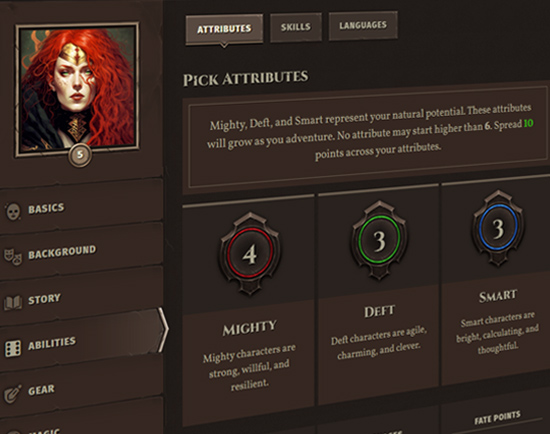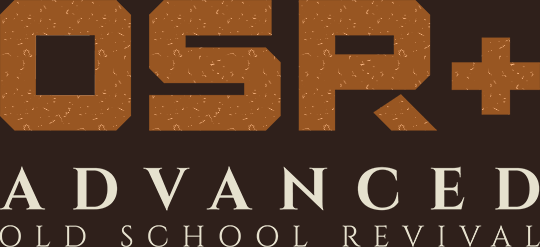Rolling for a Scene
Sometimes the GM may want to resolve an entire scene without resorting to turn-by-turn action. A scene check is made up of one or three rolls, each roll representing an "act" within the scene. Each roll functions like a success check, but the target number (TN) for a clean success escalates with each act.
The GM starts by establishing the stakes in each act. The stakes represent what is to be gained by a clean success and the consequences of rolling poorly. Unlike the success check, the GM reveals the possible outcomes for success at a cost in a scene check ahead of the roll.
Scene Check Anatomy
- One hero in the party leads the action and rolls the d6.
- Another hero adds their attribute to the roll that matches the nature of the action (as determined by the GM).
- A third hero adds a skill.
- Any other hero who has not contributed to the roll thus far can add a story tag, but the GM may also apply a weakness tag from any of the heroes involved against the roll.
If there are fewer characters than three to participate, a single character may make the roll and apply the attribute. If there are more than four heroes involved, the extra heroes can still collaborate, and their participation allows for more options within each part of the roll: alternative story tags, skills, or a choice between attributes.
Scene Check Target Number Table
| target | act 1 | act 2 | act 3 |
|---|---|---|---|
| Poor | 6 or less | 7+ | 11+ |
| Average | 7+ | 11+ | 13+ |
| Good | 11+ | 13+ | 17+ |
| Exceptional | 13+ | 17+ | 21+ |
| Extraordinary | 17+ | 21+ | 25+ |
| Legendary | 21+ | 25+ | 29+ |
Acting in the Scene
What exactly does it mean for heroes to contribute to a scene check?
Whatever a hero does fictionally justifies what she contributes to the roll mechanically. She might be casting spells, fighting off hordes, rigging up traps, or gabbing with courtiers—likely she’s doing a bunch of things over some length of time, as determined by the GM.
For this reason, spells or abilities the heroes might be using as part of their action can't be used to enhance the roll itself. For example, you can't confer advantage on the roll with a spell. The roll is the collaborative outcome of everyone who contributes to the scene.
Raises & Wagers
The GM may offer a raise in acts 2 and 3, before the party rolls.
A raise represents new developments in the scene the party can take advantage of, if they accept the added risk.
For example, if the party is breaking into a prison to save someone, they may learn in act 2 that the person they're rescuing has a jailmate who also needs rescuing. As another example, a party engaged in an epic battle against a foe may notice that the foe's throne sits upon an explosive lodestone that if disrupted, could turn the tide of battle.
In both scenarios, it will take extra effort for the party to take advantage of the raise. If the party accepts the raise, the GM confers a -2 penalty to the roll in that act.
Typically the raise offers something narratively advantageous to the party, not mechanical. The party itself may also create a raise, but in this case it is called a wager. The GM may reject (or alter and accept) a wager, in the same way the party may accept a raise.
Single-Act Scene Check
If the GM calls for a single-act scene check, then the scene check is complete in one roll. In this case, you can contribute either a story tag or a skill to the roll, but not both. (The GM may also offer a raise and the party may also offer a wager in this act.)
Stances & Scene Checks
Some stances can be used in the context of a scene check.
Time in a scene check is abstract, meaning the GM may skip vast gulfs of time between acts in the scene check. If you use a stance in a scene check, your stance doesn't reset until after you've had a chance to rest in another game mode.
Deed Dice & Scene Checks
Deed dice cannot be used in scene checks.
 Armor
Armor Classes
Classes Conflicts
Conflicts Ethos
Ethos Flaws
Flaws Kits
Kits Maleficence
Maleficence Origins
Origins Shields
Shields Skills
Skills Spells
Spells Stances
Stances Tactics
Tactics Talents
Talents Treasure
Treasure Weapons
Weapons











 Hall of Heroes
Hall of Heroes Hall of Legends
Hall of Legends Dungeons & Flagons
Dungeons & Flagons